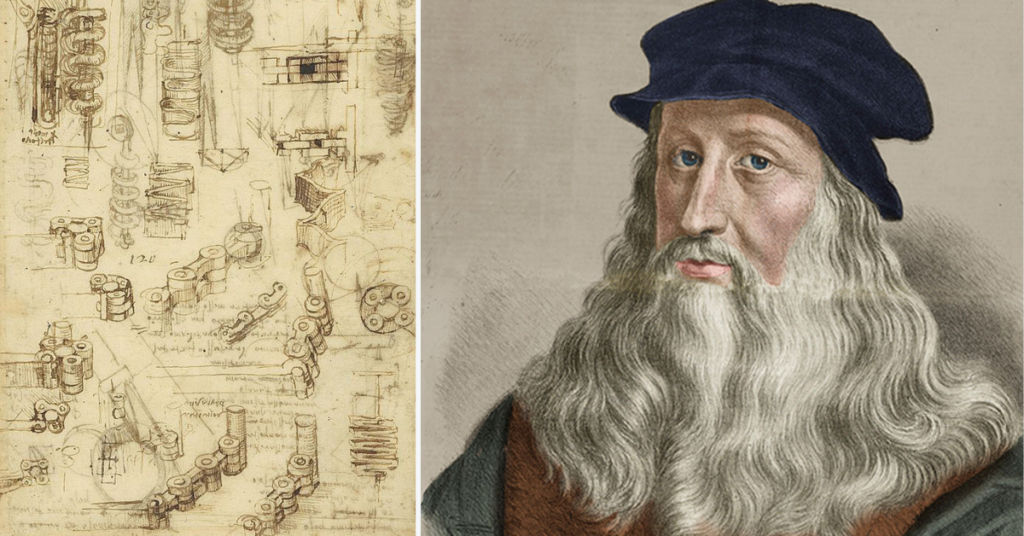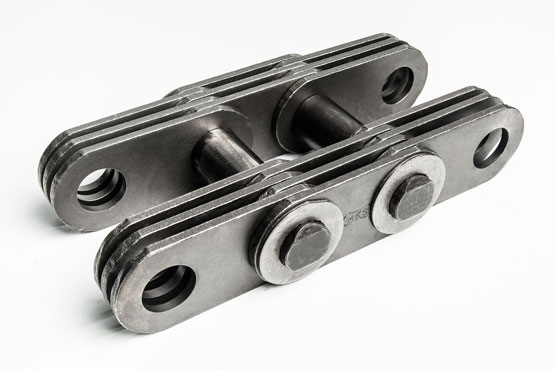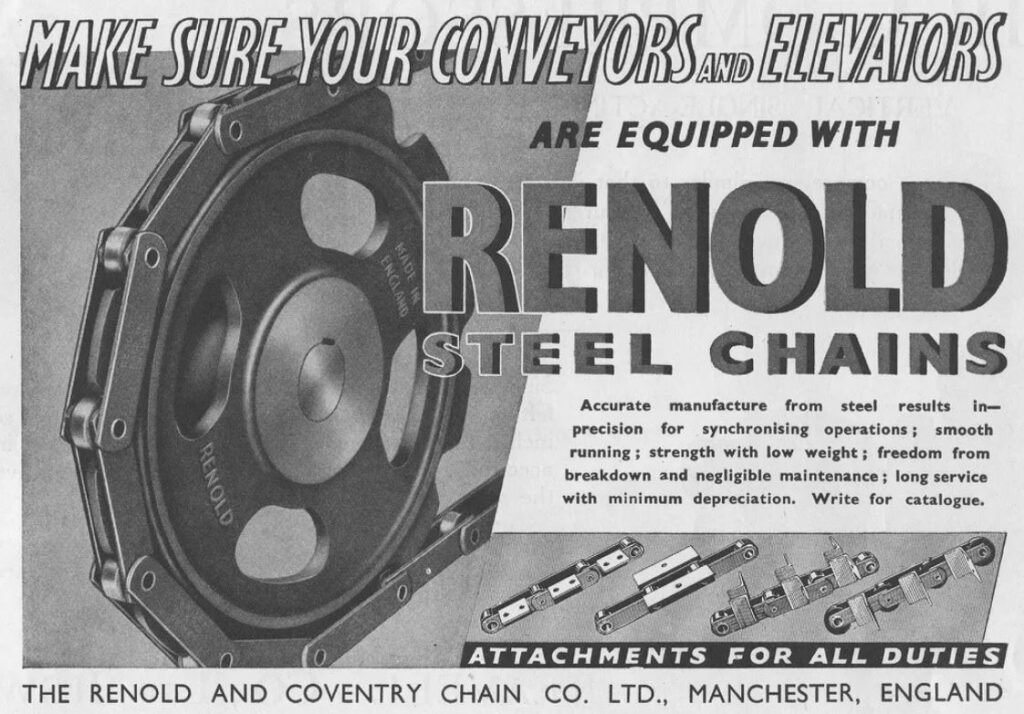The History of Roller Chain
The History of Roller Chain
What is Roller Chain?
Roller chain or bush roller chain is the type of chain drive most frequently used for mechanical power transmission on numerous types of domestic, industrial, and agricultural machinery, including conveyors, printing presses, cars, motorcycles, and bicycles. It is made up of several short cylindrical rollers connected by side links. It is propelled by a sprocket, a wheel with teeth. It is a straightforward, dependable, and effective method of transmitting power.
Roller Chain
Did you know?
It is possible to trace the origin of the word “chain” to an ancient Indo-European word. Chain was used to raise a bucket of water from a well as early as 225 BC. This bucket chain dates back a long time and was made of linked metal rings.
The History of Roller Chain
Leonardo da Vinci drew sketches of what appears to be the first steel chain in the 16th century. These chains, which are made entirely of plates and pins and have metal fittings, were probably intended to transmit pulling power rather than wrapping power. But a roller bearing can be seen in da Vinci’s drawing.
The technology was slow to catch up with the concept. Up until the 19th century, issues with steel production and processing prevented chain growth, but new technologies made steel chain and bearings a reality.
A similar looking chain for bicycle use was patented in the 1800s by a Frenchman named Gull. Today, hanging applications still use this chain, also known as “Gull Chain.”
In 1800, James Fussell patented the first roller (mechanical) chain, as part of a balance lock that would transport canal boats up and down a hill. Sadly, his efforts ultimately failed as the project was abandoned due to financial reasons. However, the design of the roller chain was developed from this point and would later become a pivotal component within the power transmission industry.
The first leaf chain in history was created by André Galle and patented in 1829.
What is a Galle Leaf Chain?
A Galle leaf chain is the simplest type of steel link chain. The plates rotate directly on the pin lug. With this type of chain, the bearing area is very small. Therefore, the chain speed should not exceed 0,3 m/s. Consequently, Galle leaf chains are less suitable for power transmission, and they are almost exclusively used as load chains (e.g., counterweight chains, lock chains and tack chains).

Galle leaf chains are still currently used in a variety of heavy-duty, slow moving applications including furnace doors and sluice gates.
Used by water utility and water treatment companies for hoisting applications in very wet conditions, such as sluice gates, Galle leaf chain is extremely durable and anti-corrosive to withstand water resistance and prolong wear-life.
Up to this point in history, nobody had ever considered including rollers in the transmission.
However, James Slater, (Bolton, UK) rose to the occasion and invented the first transmission chain with rollers in 1864. His Salford business became aptly named The Chain Making Company (later to become Hans Renold Co.)
Although the rollers made it easier for the chain to turn the sprocket, this did not address the issue of the chain’s rapid wear that engineers were facing.
In 1873, a young Swiss engineer by the name of Hans Renold went to Manchester, England in search of employment and began working for a machine export company in 1879. His independent and inventive spirit soon found an outlet via the purchase of a small textile-chain making business in Salford where began working on a new type of chain that would transform industry forever.
The Hans Renold Co. was established following the purchase of the James Slater business. Still in operation today, this makes Renold the oldest established transmission chain company still in existence in the world.
 In 1880, came a new development, Hans Renold Co. introduced the patented feature of the solid bush.
In 1880, came a new development, Hans Renold Co. introduced the patented feature of the solid bush.
The bush roller chain was finally invented. The design of which is still used today throughout the world. —the bushing—revolutionized steel chain. Chains with bushings had greater wear resistance than Gull Chain because the bushing acted as a bearing, protecting the pin.
At this point, the chain story moves into superspeed. Steel bushing chain was used on bicycles, in the rear-wheel drive of early automobiles, and, in 1903, as the propeller drive in the Wright brothers’ airplane;
Where is roller chain used today?
Roller chain is the most commonly used type of industrial chain, which is why you will find this power transmission component in every industry. Roller chain is available in different sizes, lengths and materials, enabling it to be used in almost every application and operating condition.
Here are just some of the areas where roller chain is used in industry:
- Car production
- Marine engineering
- Mining and excavation
- Industrial applications and equipment
- Food production
Did you know?
At Hercules SLR we have the capability to break test all kinds of things. Synthetic Slings, Wire Slings, Chain Slings and even Roller Chains, to name but a few. Check out this test recently performed in our test bed. This break test peaked at 51980 LBS!
For all your inspections, testing, servicing, and certification, make sure you make Hercules your first port of call.
Check out our YouTube video of our team doing a break test on a roller chain below.
——————————————————————————————————————————————
The Hercules Group of Companies encompasses a wide portfolio of products and services across 7 diverse companies.


